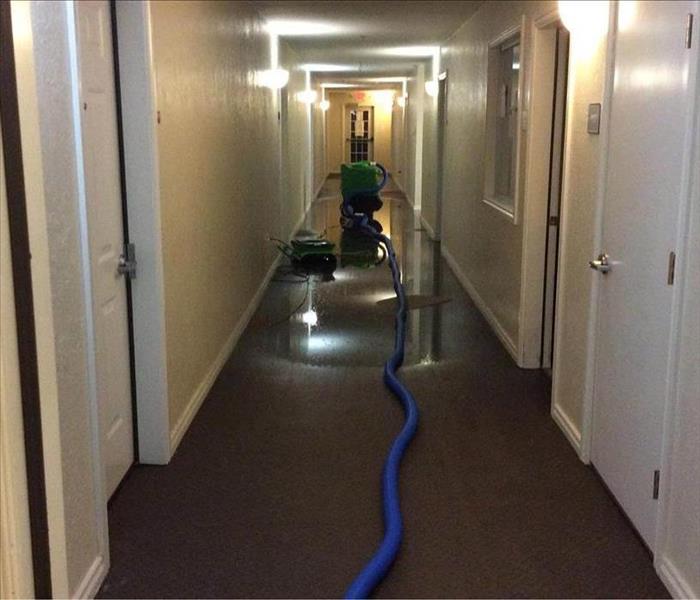3 Tips To Minimize Secondary Water Damage
1/14/2021 (Permalink)
Steps To Prevent or Minimize Secondary Water Damage
When water floods your building, some water damage happens right away: wet, dirty furniture, soaked carpet and padding, and wet drywall, for example. However, some types of water damage occur days, weeks, or months after the flood event, such as black mold, rotten wood, and warped walls or floors. This type of damage is called secondary damage and repairing it can be expensive and time-consuming. Luckily, it’s possible to minimize or prevent secondary water damage.
1. Start Cleanup Right Away
The water in your building will begin to evaporate into the air immediately. This evaporating water will increase your building’s humidity levels. Exposure to high humidity may cause wood to warp and paint to peel. The moist air is an excellent environment for mold and bacteria growth. Extracting the excess or standing water as soon as possible will stop it from evaporating and increasing the humidity.
2. Ensure That All Surfaces Are Properly Dried
Inadequate cleanup can result in traces of moisture remaining in your building’s walls, ducts, subfloors, or other hidden locations. This creates the perfect environment for black mold to grow and spread. Remove wet carpeting, padding, and other porous floor coverings and cut away wet drywall. All framework, insulation, and other building materials must be completely dry before repairs can begin.
3. Clean and Sanitize to Combat Mold
Mold can begin to grow within hours of the flood event. Use a chemical biocide to destroy any mold that has already formed. Note that, to prevent a future mold outbreak, it’s important to also use encapsulants and/or high-powered filtration devices to trap and remove mold spores from the air in the affected area. You may need a professional water restoration company to perform this service.
Once black mold begins to grow in your Oklahoma City, OK, building, it can be nearly impossible to remove it completely. By acting quickly and ensuring that the restoration process is carried out correctly, you can avoid most secondary damage to your building.





 24/7 Emergency Service
24/7 Emergency Service
